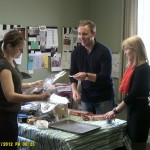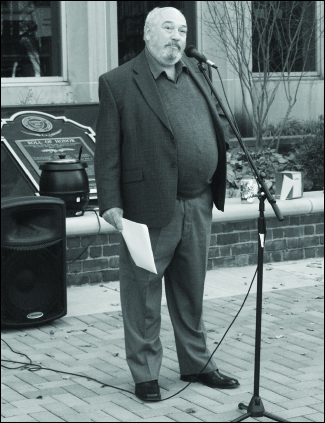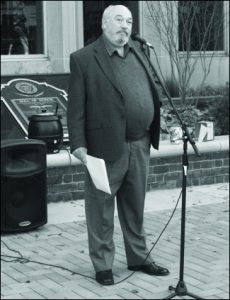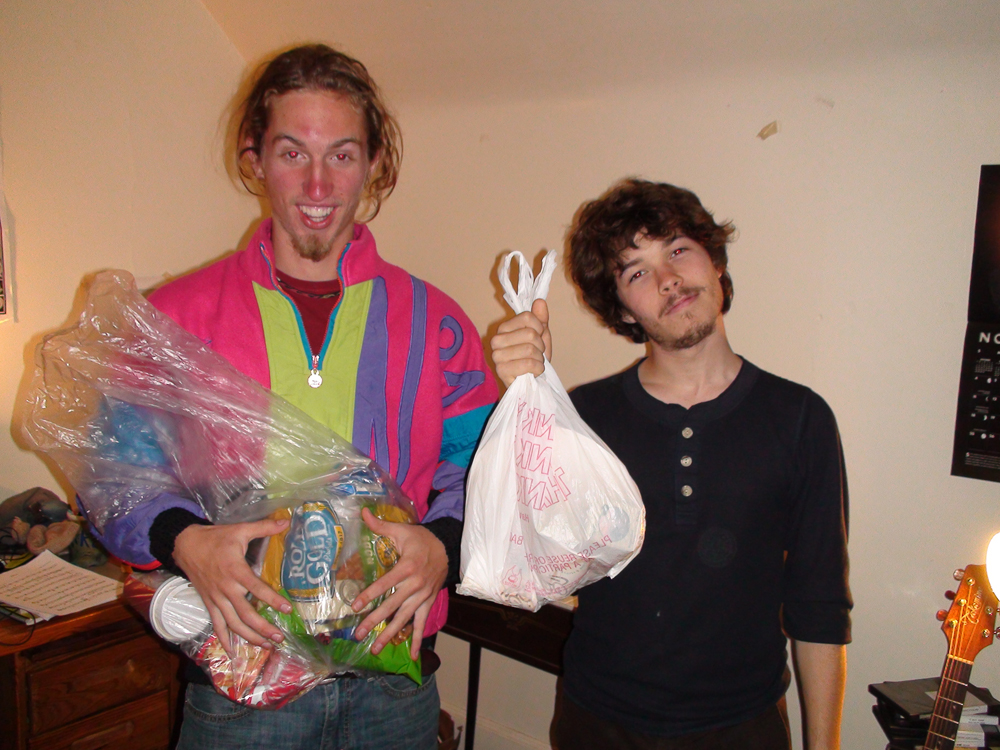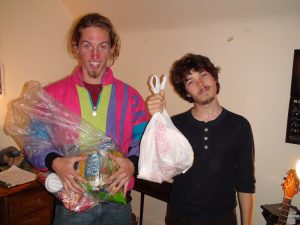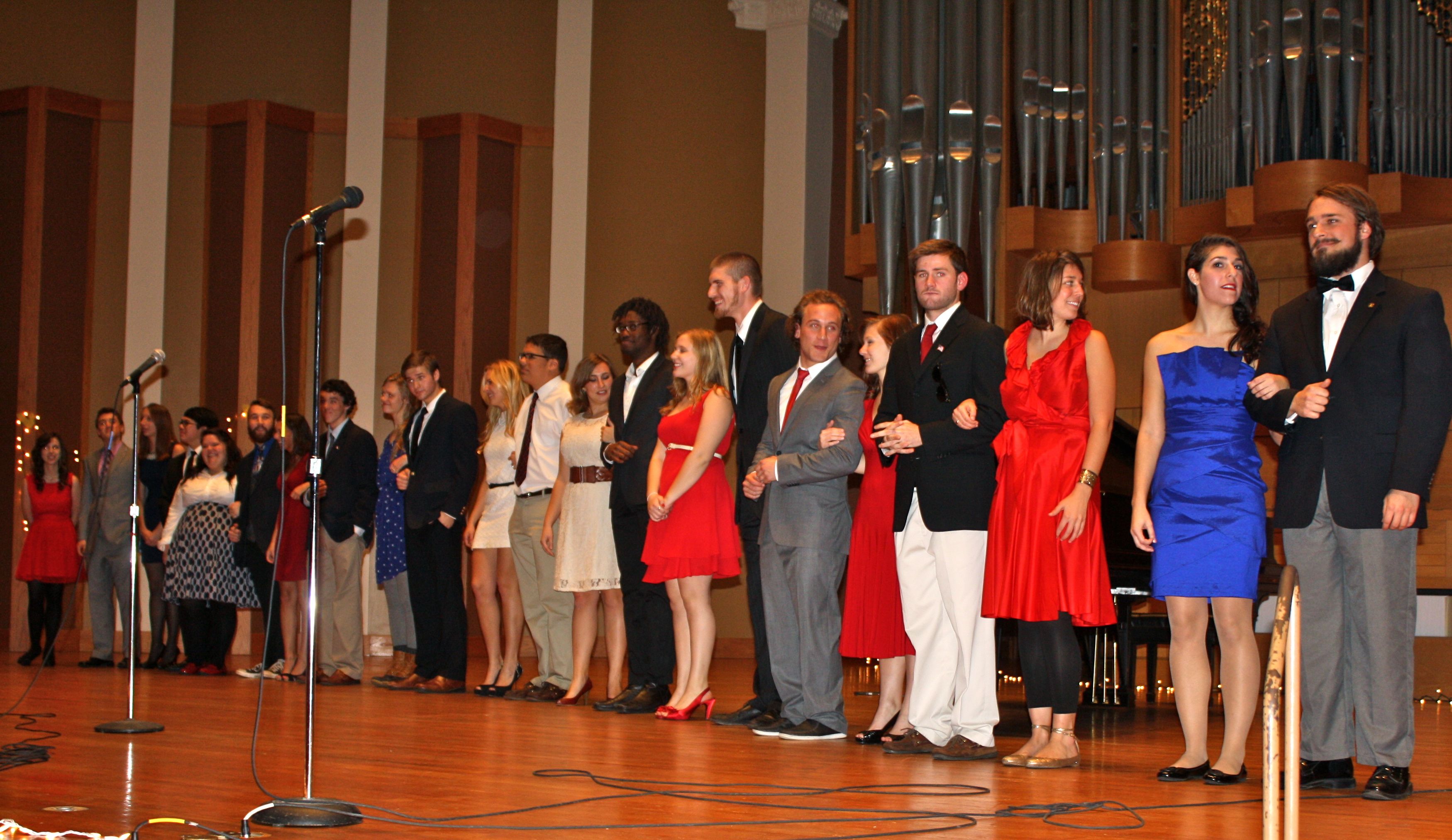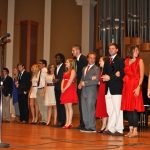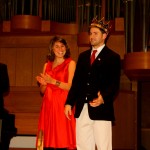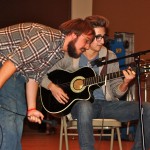By Transcript Staff, Katie Wiskofske and Nicole Barhorst
Transcript Correspondents
Every year, the Small Living Units hold their version of rush: “SLUsh.” SLUsh is a series of events held at each of the SLUs for students interested becoming part of the community to learn more about the individual houses, their missions and members.
This is the first part of a series of profiles on the SLUs so the campus can get to know them better house by house.
House of Thought
Many students may walk by the House of Thought (HoT) on Rowland Avenue and not know what the mission of this SLU is.
The HoT mission is to encourage and enable critical thinking on campus and examine issues in the world. According to Ohio Wesleyan’s website, HoT “inculcates inspired inquiry and action.”
HoT, located on the corner of Rowland Avenue and Liberty Street, is one of the smallest SLUs on campus, with 10 current members. Currently the house has five seniors members, all of which must be replaced by the end of the year.
Senior Erinn Colmenares, a second year member of the house, said she likes living in HoT because she gets to live with the “closest people” she has on the OWU campus.
“There’s nothing to beat that,” she said.
She said she first became interested in HoT after attending a free write project by one of the previous house members.
“I was just inherently interested in a collection of students that had critical thinking at a top of a pile,” Colmenares said.
Senior Natasha Francyzk, a second year member and moderator of the house, said she just had to join the house because of the community it represented.
“I joined the house because I could do nothing else,” she said. “HoT is, was, and forever will represent my family.”
Junior Alex D’Amore-Braver, a second year member of the house, said he became interested in living in Hot as a freshman. He said he preferred HoT to living in the dorms.
“(I like the) communal feeling of a SLU, in which you know and hangout with everyone you live with,” he said. “We have more open space to call our own, which to me creates a more homey feel. Also, we have our own kitchen, and I love to cook.”
Junior Maxwell MacKenzie, a first year member of the house, said he likes the community feel of the house.
“The 10 members really get along,” he said. “They’ll always help me out.”
D’Amore-Braver said he was also interested in the house because of the members.
“It was a community of people who were intelligent and engaged, but also knew how to have a good time,” he said.
“I really liked how they pursued academic issues all the time, engaging in long and dynamic discussion about issues within and outside of their major. The house has always had members with a wide variety of interests both academic and non, and therefore tackles every issue from multiple perspectives.”
Franczyk said the atmosphere in the house has been a special thing to see this year.
“The house has grown very close this year,” she said. “House of Thought, like all SLUs, has periods of greater and lesser closeness. My freshman year, the house was very close, and it is very close again this year. It has been inspiring to watch my housemates strive to ‘be better’ this year, per our house motto.
We all try to take care of one another, in a way that I love.”
House projects HoT has put on include Connect the Dots, a musical concert, “Res Nova” the literary magazine and Socrates Café.
Socrates Café is a discussion-based event where a question is asked and answered with several perspectives. A professor and a student take a major position on the question posed and a small debate takes place with one rebuttal to each side. The discussion is then opened up to others perspectives from the rest of the gathered students.
Socrates Café was Colmenares’ house project this semester, and she said the event is important because it broadens the idea of a debate.
“The point of this is to promote the notion that students can find an engaging discussion without the necessary experience in argumentative environments or formal debating,” she said.
“It is also meant to challenge the belief in there only being ‘two sides’ to a question in which one is correct and the other is differentially wrong by showing a multitude of possible (and) probable answers or replies.”
D’Amore-Braver and MacKenzie worked together for their house project this year. They compiled a cookbook full of recipes from students and faculty. The cookbooks were then sold to benefit Local Matters, a local food charity.
The only thing Colmenares would change about HoT is she would like to “add insulation to the walls.”
“Please interview if you like having yelling matches, wolfing down sarcasm and thinking in plus outside the box,” she said.
D’Amore-Braver said the thing he would like to change is the fact the house theme is too general.
“Critical thinking applies to the themes of all the other SLUs and most projects that you could do!” he said. “I feel that sometimes this can cause a lack of unity and sometimes even apathy in our doings.”
MacKenzie said he would change the house projects so that they would be more open, “allowing us to help different groups on campus, and not so focused on SLU life.”
Franczyk said HoT has many opportunities for new members.
“The house offers new members a supportive, dynamic environment in which to grow and learn. We provide a safe place to think critically all day, every day,” she said. “House of Thought is a place where your ideas and beliefs will be challenged constantly, not antagonistically, but so that we might all grow intellectually.”
The Women’s House
This year, the Women’s House (WoHo) is looking to continue its legacy of a supportive, loving environment for people of all sexes and walks of life by attracting new members through SLUsh events.
WoHo was established at Ohio Wesleyan as SLU in the 1980s, and is one of three SLUs located on Rowland Avenue, right next to the Modern Foreign Languages House (MFL) and the empty lot where the Creative Arts Houses (CAH) used to be.
It is the mission of the house’s members to “encourage diversity while creating a community framework through which successful programming can occur; provide a resource for women on campus; provide a safe place for women on campus; and fight oppression and the restriction of freedoms, with special consideration towards women and members of the (LGBTIQA) community,” according to the Ohio Wesleyan website.
Junior Jenna Culina, a second year member of the house, said she became a member of the house because of its members as well as its mission.
“(Deciding to join WoHo was) a spur of the moment decision that was more so spawned by my love for the people that were living in the house,” she said.
Senior Leah Shaeffer, a third year member of the house, said she joined the house to grow as a person and a feminist.
“I joined the house because I was looking for a way to branch out, make new friends, and become more involved with and educated about social justice issues,” she said. “It worked.”
Senior Alex Crump, a third year member of the house, said she joined WoHo mainly because of the house’s mission.
“I joined because the mission of the house really spoke to me, I really felt I would fit there,” Crump said.
Senior Paige Ruppel, a third year member and the moderator of the house, said she had similar reasons for joining WoHo.
“I joined the women’s house because feminism, women’s rights and equality for all are issues that have implications for me politically and personally,” Ruppel said.
“Being moderator the past two years has been a wonderful experience and has helped me grow a lot personally and as a feminist. I have been able to incorporate feminist values into my leadership style, and more greatly influence the community within the house.”
Sophomore Kyle Simon, a first year WoHo member, said he joined the house because he wanted to live in an environment where he wouldn’t be judged for his sexuality and where he would be encouraged to be more involved in service and activism.
The Women’s House provides a voice for feminists and members of the LGBTIQA community at OWU. The members of the house put on events revolving around these issues every semester as a requirement for living there.
While there are some projects that are consistently put on by the house, such as Love Your Body Day and Take Back the Night, but members also organize unique projects from semester to semester. House projects from this semester include “Anatomy of Hate,” slam poet Theresa Davis and SlutWalk.
Ruppel said she has watched the house improve over the past two years as moderator.
“I am very proud of the ways in which we have grown as a community and the improvements in some of our programming,” she said.
WoHo members also participate in activities to strengthen relationships within the house, such as a retreat and brunches.
Simon said these events are beneficial to the dynamic of the house.
“(The events help us become) more emotionally attached to one another,” he said.
“(It was) surprising to see how many of us had intersecting lives, not in a physical way, but in how we experienced life individually. Even though all of us are uniquely different people, we come together and share in a passion that brings all of us together.”
Culina said some of her favorite memories of living with this “all-inclusive group” have been of sitting in the common room talking with her roommates, whether they are a “having a heart-to-heart discussion or simply being idiots.”
Crump said she also likes the variety of conversation in the house is her favorite part of living there.
“The ability for me to come in the common room and have a really serious conversation about feminism or a relevant issue one day, and to come in the next and be laughing so hard I’m crying about something stupid (is my favorite part),” she said.
Shaeffer said the community aspect of the house is her favorite part of living there.
“There is almost always someone to hang out with, and who will listen to you, be excited for you or sympathize with you,” she said.
“My favorite times have been when we have all been hanging out together and being really silly, like during SLU wars or our murder mystery party.”
The WoHo has eight seniors currently living in the house, meaning all those positions in the house must be filled by the end of this year’s SLUsh and interview process.
Simon said prospective members of WoHo should be able to balance involvement in the OWU community with having a great time.
Culina said the WoHo is a place not just for women but also for anyone interested in “the blossoming of knowledge and intelligence.”
“We strive to build bridges and not create drawbridges (some may cross while others have to wait for their turn), as our society is so apt to do,” Culina said.
Crump said new members have many opportunities in the house, both personally and within the mission of the house.
“I think the house can offer new members a place to grow and to find their place in feminism,” she said.
Shaeffer said new members would have a strong community at the WoHo.
“Not only is WoHo a way to make new friends and contacts, become more educated about and involved with social justice issues like feminism, LGBTIQA issues, body image and more, but it also offers you a support system,” she said. “Your housemates will always be there for you.”
Sophomore Meredith Harrison, a first year member of the house, said the WoHo has a lot to offer new members, especially in the area of personal growth.
“The Women’s House offers a safe environment for people regardless of gender identity, sexual orientation and expression, racial and ethnic identity, and social class,” she said.
“As a new member this semester, I have become tremendously involved in clubs, organizations, and programming, and I owe that living in this house. I have a better understanding of who I am and what I believe in. I don’t think I would have figured that out this semester if I were living in a dorm.”
